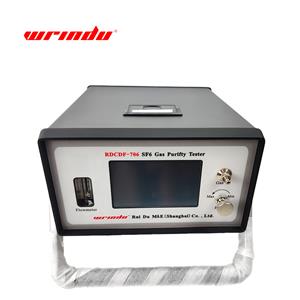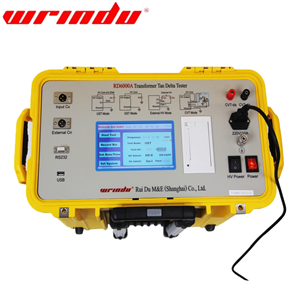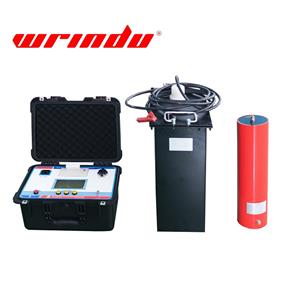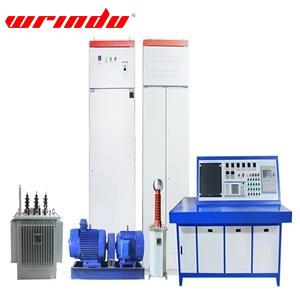Thirty cable problems cable people must to know!
Important knowledge about cables
Testing cable faults requires the use of professional cable testing equipment. Wrindu Company has specialized in producing and selling cable fault testing equipment for more than 10 years. We recommend our RDCD-II cable fault testing system to you, which is a complete set of cable fault solutions. The solution includes cable fault locator and cable fault pre-locator. Looking forward to hearing from you.
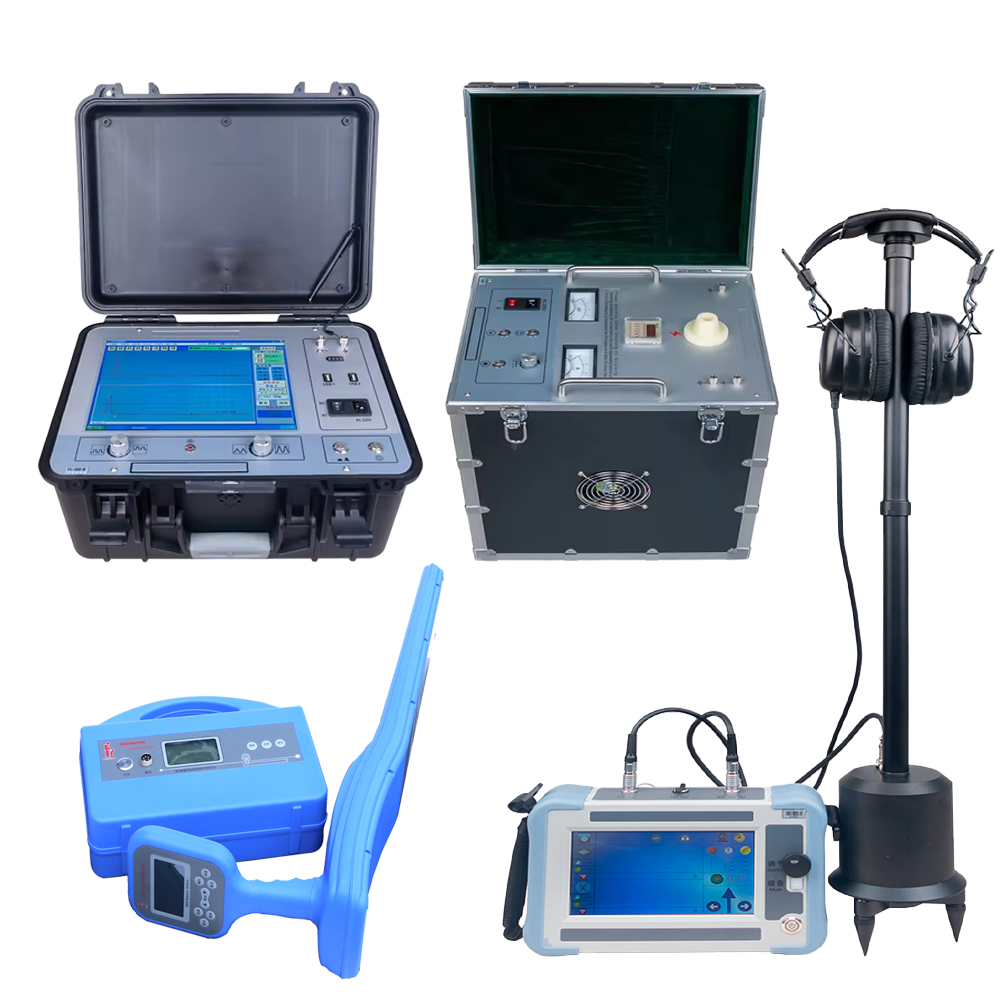
1. What are the types of commonly used wires and cables according to their uses?
Answer:
According to use, it can be divided into bare wires, insulated wires, heat-resistant wires, shielded wires, power cables, control cables, communication cables, radio frequency cables, etc.
2. What types of insulated wires are there?
Answer:
Commonly used insulated wires include the following: PVC insulated wires, PVC insulated flexible wires, nitrile-PVC mixture insulated flexible wires, rubber insulated wires, agricultural directly buried underground aluminum core plastic insulated wires, rubber insulated cotton yarn Textile cords, PVC insulated nylon sheathed wires, PVC insulated cords for power and lighting, etc.
3. What are the cable accessories?
Answer:
Commonly used electrical accessories include cable terminal junction boxes, cable intermediate junction boxes, connecting pipes and terminal blocks, steel plate junction troughs, cable trays, etc.
4. What is a cable intermediate joint?
Answer:
The device that connects the conductors, insulation shields and protective layers of cables to connect cable lines is called a cable intermediate joint.
5. What aspects should be considered when selecting the cross-section of power cables?
Answer:
The following aspects should be considered:
(1) The long-term operating current allowed by the cable;
(2) Thermal stability in the event of short circuit;
(3) The voltage drop on the line cannot exceed the allowable working range.
6. What regulations should be followed when selecting the cross-section of power cables?
Answer:
The selection of power cables should follow the following principles:
(1) The rated voltage of the cable must be greater than or equal to the rated voltage of the power supply system at the installation point;
(2) The continuous allowable current of the cable should be equal to or greater than the maximum continuous current of the power supply load;
(3) The wire core cross-section must meet the stability requirements of the power supply system during short circuit;
(4) Check whether the voltage drop meets the requirements based on the cable length;
(5) The minimum short-circuit current at the end of the line should enable the protective device to operate reliably.
7. What are the advantages of cross-linked polyethylene cables and oil-paper cables?
Answer:
(1) Easy to install because it allows a small minimum bending radius and is lightweight;
(2) Not affected by line differences;
(3) Good thermal performance, allowing high operating temperature and large transmission capacity;
(4) The cable accessories are simple and all are dry structures;
(5) Operation and maintenance are simple and there is no oil leakage problem;
(6) The price is lower;
(7) High reliability and low failure rate;
(8) Few manufacturing steps, simple process, and significant economic benefits.
8. What are the requirements for clamps for fixing AC single-core cables? Why?
Answer:
The clamp should have no iron parts to form a closed magnetic circuit. This is because when the cable core passes current, magnetic lines of force are generated around it. The magnetic lines of force are proportional to the current passing through the core. If magnetically conductive materials such as iron parts are used, according to It can be seen from electromagnetic induction that eddy currents will be generated in the iron parts to cause the cable to heat up and even burn the cable. Therefore, iron parts cannot be used as fixed fixtures for single-core AC cables.
9. What are the biggest features and advantages of the heat shrinkable cable head accessories?
Answer:
The biggest feature of the heat shrinkable attachment is that it uses stress tubes instead of traditional stress cones. It not only simplifies the construction process, but also reduces the size of the joint terminals. It is easy to install, saves time and labor, has superior performance, and saves metal. Heat-shrinkable cable accessories are both potted and dry-packed, combining the advantages of both types of accessories.
10. What inspections should be carried out before laying cables?
Answer:
(1) The brackets should be complete and the paint should be complete.
(2) The cable model, voltage, and specifications comply with the design.
(3) The cable insulation is good. When there is doubt about the sealing of the oil-paper cable, moisture judgment should be made; directly buried cables and small bottom cables should pass the DC withstand voltage test; oil samples of oil-filled cables should pass the test.
(4) The oil pressure of oil-filled cables should not be lower than 1.47MPa.
11. When you have doubts about the sealing of oil-paper insulated power cables, how can you use a simpler method to check whether the cable insulation paper is damp?
Answer:
Light the cable insulation paper or put it into cable oil at about 150℃ for inspection. If there is no "hissing" sound or white foam, it means it is not affected by moisture.
12. What should be stated on the cable sign? What are the requirements for writing it?
Answer:
The cable line design number, cable model, specification and starting point should be indicated on the signboard. Cables used in parallel should have sequence numbers. The handwriting is required to be clear and not easy to fall off.
13. Where should the orientation signs of directly buried cables be set?
Answer:
At both ends of the cable, the cable joint is at 50~100m of the straight section and the corner where the cable changes direction.
14. What are the functions of the outer sheath and the inner sheath of the cable?
Answer:
Outer sheath: Protect the inside of the cable from mechanical damage and chemical corrosion and enhance mechanical strength.
Inner sheath: Keeps the insulation layer from coming into contact with water, air or other objects, preventing the insulation from moisture and mechanical damage to the insulation layer.
15. What are the advantages of cross-linked heat shrinkable cable accessories?
Answer:
This is a new type of material. Compared with other current types of accessories, it has the advantages of superior electrical performance, small size, low mass, easy installation, and matching materials. It is also weather-resistant, anti-pollution, flame-retardant and self-extinguishing, etc. ability.
16. What are the main properties of the insulation layer material of power cables?
Answer:
It should have the following main properties:
(1) High breakdown strength;
(2) Low dielectric loss;
(3) Considerably high insulation resistance;
(4) Excellent discharge resistance;
(5) Has certain softness and mechanical strength;
(6) The insulation performance is stable for a long time.
17. What are the regulations for cable protection tubes?
Answer:
(1) When cables need to be laid through protective tubes, the inner diameter of the tube should not be less than 1.5 times the outer diameter of the cable, and the inner diameter of concrete pipes, clay pipes, asbestos, and cement pipes should not be less than 100mm;
(2) The bending radius of the cable tube should comply with the bending radius of the inserted cable;
(3) Each pipe should have no more than three elbows and no more than 2 right-angle bends.
18. How to measure the outer diameter of the cable sheath?
Answer:
Measure the outer diameter of the sheath and its average value at five points evenly distributed on the circumference of the sheath. The average outer diameter is the outer diameter of the sheath.
19. How to connect copper core cables of different cross-sections?
Answer:
To connect copper core cables with different cross-sections, open weak-backed copper nozzles can be used and connected by soldering method. Pure copper rods can also be used to connect copper nozzles according to different cross-section requirements and connected by crimping method.
20. What are the insulating materials used to make cable terminals or intermediate joints?
Answer:
There are insulating glue, insulating tape, insulating tube, insulating gloves, insulating resin, etc.
21. What are the requirements for fireproof sealing of cable holes?
Answer:
For larger cable penetration holes, such as where cables penetrate floor slabs, etc., when using fireproof plugging materials to seal them, four to six layers of fireproof paint should be applied to the surface of the cable according to the actual situation, with a length of about 1.5m from the bottom of the hole, and then The plate support fireproof plugging material is processed from refractory materials with a certain strength to ensure that it is firm after blocking and is easy to disassemble and assemble when replacing cables. The plugging is dense and without pores to effectively block smoke and fire.
22. What are the main categories of commonly used low-voltage power cables according to their insulation and protective layers?
Answer:
(1) Oil-impregnated paper insulated lead-clad (or aluminum-clad) power cable;
(2) Non-drip oil-impregnated paper insulated power cable;
(3) PVC insulated PVC sheathed power cable;
(4) Cross-linked polyvinyl chloride insulated polyethylene sheathed power cable;
(5) Cross-linked polyvinyl chloride insulated and polyvinyl chloride sheathed power cable;
(6) Rubber insulated power cable.
23. What are the factors that determine the long-term allowable carrying capacity of a cable?
Answer:
It depends on the following three factors:
(1) The long-term allowable operating temperature of the cable;
(2) The heat dissipation performance of the cable itself;
(3) Cable installation conditions and heat dissipation conditions of the surrounding environment.
24. What tests and inspections should be carried out before laying power cables?
Answer:
Before laying, check whether the model, specification and length of the cable meet the requirements and whether there is any external damage. Use a 1000V megohmmeter to remotely measure the insulation resistance of low-voltage cables. The resistance is generally not less than 10MΩ. Use a 2500V megohmmeter to measure the high-voltage cables. The resistance value is generally not less than 400MΩ.
25. How many projects can the cable project be divided into?
Answer:
(1) Construction site transportation:Including the loading, unloading, transportation and empty return of engineering materials from the warehouse to the construction site.
(2) Local engineering: including road excavation, tunnel and trench construction, etc.
(3) Laying project: Including laying, intermediate head production, lifting cover plate, buried pipe, school tide, traction head production, etc.
(4) Both end engineering: Including the production and installation of supports, suspension bridges and their foundations, production of terminal heads, installation of oil pressure and signaling devices, and various electrical performance tests, etc.
(5) Stopper project: Including the production of oil-filled cable stoppers, the installation of oil supply tanks, automatic drainage and signaling devices, etc.
(6) Grounding project: Including insulation joints, transposition boxes, protectors, grounding box installation, etc.
26. What inspections should be carried out for the acceptance of cable lines?
Answer:
(1) Cable specifications should comply with regulations, be arranged neatly and without damage, and have complete, correct and clear labels;
(2) The fixed bending radius of the cable, the relevant distance and the wiring of the metal sheath of the single-core power cable should meet the requirements;
(3) The cable terminals and intermediate heads do not leak oil and are installed firmly. The oil pressure of the oil-filled cable and the meter setting value should meet the requirements;
(4) Good grounding;
(5) The color of the cable terminal is correct, and the metal parts such as brackets are fully painted;
(6) There should be no debris in the cable trench, tunnel, and bridge, and the covers should be complete.
27. What should we pay attention to during the transportation, loading and unloading of cables?
Answer:
(1) During transportation, loading and unloading, cables and cable drums should not be damaged. It is strictly forbidden to push cable drums directly off the vehicle. Cables should generally not be transported or stored flat.
(2) Before transporting or rolling the cable drum, it must be ensured that the cable drum is firm and the cable is wound tightly. The oil pipe between the oil-filled cable and the pressure oil tank should be fixed and not damaged. The pressure oil tank should be secure and the pressure indication should meet the requirements.
28. What measures are taken to prevent cable fire?
Answer:
(1) Use flame-retardant cables;
(2) Use fireproof cable brackets;
(3) Use fire retardant coatings;
(4) Fire partition walls and fire baffles should be installed in cable tunnels, mezzanine exits, etc.;
(5) Overhead cables should avoid oil pipelines and explosion-proof doors. Otherwise, local pipe penetration or heat insulation and fire prevention measures should be taken.
29. What aspects should be considered when selecting the cross-section of power cables?
Answer:
The following aspects should be considered:
(1) The long-term operating current allowed by the cable;
(2) Thermal stability in the event of short circuit;
(3) The voltage drop on the line cannot exceed the allowable working range.
30. What are the advantages of power cables and overhead lines?
Answer:
(1) Reliable operation. Because it is installed in hidden places such as underground, it is less damaged by external forces and has fewer chances of failure. The power supply is safe and will not cause harm to people;
(2) The maintenance workload is small and frequent inspections are not required;
(3) No need to erect poles and towers;
(4) Helps improve power factor.

